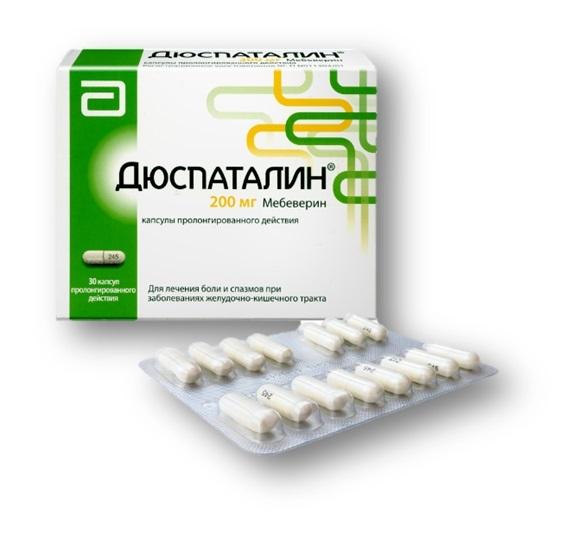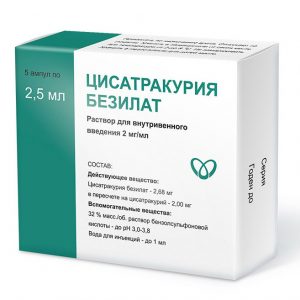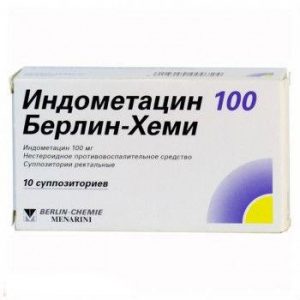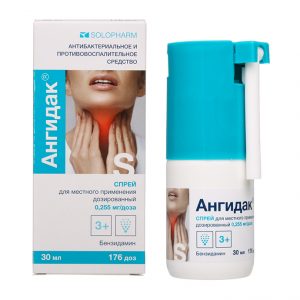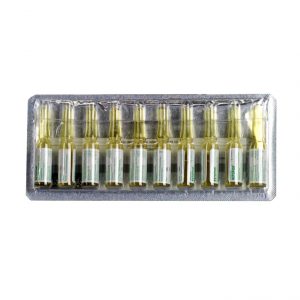Description
Latin name
Duspatalin
Release form
Sustained-release capsules.
Packing
30 pcs
Pharmacological action
Pharmacodynamics
Symbicort Turbuhaler contains formoterol and budesonide, which have different mechanisms of action and exhibit an additive effect in reducing the frequency of exacerbations of bronchial asthma.
budesonide. Budesonide, an inhaled glucocorticosteroid, in recommended doses has an anti-inflammatory effect in the bronchi, reducing the severity of symptoms and the frequency of exacerbations of bronchial asthma with a lower frequency of side effects than when using systemic glucocorticosteroids. Reduces the severity of edema of the bronchial mucosa, mucus production, sputum formation and respiratory tract hyperresponsiveness.
Formoterol. Formoterol is a selective agonist of p2-adrsnsrgic receptors, which causes relaxation of the smooth muscles of the bronchi in patients with reversible airway obstruction. The bronchodilator effect occurs quickly, within 1-3 minutes after inhalation and persists for 12 hours after taking a single dose.
Budesonide + Formoterol. Bronchial asthma Adding formoterol to budesonide reduces the severity of symptoms of bronchial asthma, improves bronchial function and reduces the frequency of exacerbations of the disease.
The effect of Symbicort Turbuhaler on the function of the bronchi corresponds to the action of a combination of the single drugs budesonide and formoterol and exceeds the effect of one budesonide. The drug has good tolerance.
Symbicort Turbuhaler improves bronchial function and has good tolerance in children aged 6 to 11 years with the drug for 12 weeks (two inhalations of 80 / 4.5 mcg / inhalation twice a day).
Chronic obstructive pulmonary disease (COPD) In patients with severe COPD with Symbicort Turbuhaler, there was a significant decrease in the frequency of exacerbations of the disease compared with patients who received only formoterol or placebo as a treatment (average exacerbation rate 1.4 but compared with 1.8- 1.9 in the group placebo / formoterol). There were no differences between taking Symbicort and formoterol in terms of forced expiratory volume in the first minute (FEV,).
Pharmacokinetics
Absorption. Symbicort Turbuhaler is bioequivalent to the respective single drugs with respect to the systemic action of budesonide and formoterol. Despite this, there was a slight increase in the suppression of cortisol after taking Symbicort Turbuhaler in comparison with monopreparations. This difference does not have an effect on clinical safety. There is no evidence of a pharmacokinetic interaction of budesonide and formoterol.
Pharmacokinetic parameters for the corresponding substances are comparable after the administration of budesonide and formoterol in the form of single drugs and as part of Symbicort Turbuhaler. For budesonide, when administered as part of a combination drug, the area under the concentration-time curve (AUC) is slightly larger, drug absorption is faster and the maximum plasma concentration is higher.
For formoterol, when administered as part of a combination drug, the maximum concentration in plasma coincides with that for a single drug.
Igigiruyemy budesonide is rapidly absorbed and reaches its maximum plasma concentration 30 minutes after inhalation. The average dose of budesonide in the lungs after inhalation through Turbuhaler is 32-44% of the delivered dose. Systemic bioavailability is approximately 49% of the delivered dose. In children aged 6 to 16 years, the average dose of budesonide in the lungs after inhalation through Turbuhaler does not differ from that in adult patients (the final concentration of the drug in blood plasma was not determined).
Inhaled formoterol is rapidly absorbed and reaches its maximum plasma concentration 10 minutes after inhalation. The average dose of formoterol in the lungs after inhalation through Turbuhaler is 28-49% of the delivered dose. Systemic bioavailability is about 61% of the delivered dose.
Distribution and metabolism. About 50% of formoterol and 90% of budesonide binds to plasma proteins. The distribution volume for formoterol is about 4 l / kg and for budesonide 3 l / kg. Formoterol is inactivated by conjugation (active O-demethylated metabolites are formed, mainly in the form of inactivated conjugates). Budesonide undergoes intensive biotransformation (about 90%) during the first passage through the liver with the formation of metabolites,new acid and partially in the form of demethylated carboxylic acid.
Indications
Symptomatic treatment of pain, cramping, dysfunction and discomfort in the intestine, symptomatic treatment of gastrointestinal tract spasms associated with irritable bowel syndrome
, including caused by organic diseases.
Contraindications
hypersensitivity to any component of the
drug age 18 years (due to insufficient data on efficacy and safety)
Use during pregnancy and lactation
There are insufficient data on the use of mebeverine in pregnant women.
Duspatalin ® is not recommended for use during pregnancy.
Information on the excretion of mebeverine or its metabolites with breast milk is insufficient. Do not take Duspatalin ® while breastfeeding.
Clinical data on the effect of the drug on fertility in men or women are not available, however, animal studies have not demonstrated the adverse effects of Duspatalin ®.
Composition
1 capsule contains:
Active substances:
mebeverine hydrochloride 200 mg.
Excipients:
magnesium stearate – 13.1 mg,
methyl methacrylate and ethyl acrylate copolymer (1: 2) – 10.4 mg,
talcum powder – 4.9 mg,
hypromellose – 0.1 mg,
methacrylic acid and ethyl acrylate copolymer (1: 1) – 15.2 mg,
triacetin – 2.9 mg.
Capsule shell composition:
gelatin – 75.9 mg,
titanium dioxide (E171) – 1.5 mg.
Ink composition:
shellac (E904),
propylene glycol,
ammonia water,
potassium hydroxide,
dye, iron oxide black (E172).
Dosage and administration
Inside, 20 minutes before meals, without chewing and drinking with water, 200 mg 2 times a day (morning and evening).
Side effects
Messages about the following adverse events were received during the post-marketing period and were spontaneous in order to accurately assess the frequency of cases of available data is not enough.
Allergic reactions: observed mainly on the part of the skin, but other allergy manifestations were also noted.
From the skin: urticaria, angioedema, including faces, exanthema.
On the part of the immune system: hypersensitivity reactions (anaphylactic reactions).
Drug Interaction
Only studies have been conducted to investigate the interaction of this drug with alcohol.
Animal studies have shown no interaction between Duspatalin ® and ethyl alcohol.
Overdose
Symptoms: increased CNS excitability (theoretical).
Treatment: gastric lavage, symptomatic therapy. The specific antidote is unknown.
Storage conditions
Keep out of the reach of children at a temperature not exceeding 25 ° C.
Expiration
3 years.
Deystvuyuschee substances
Mebeverin
Pharmacy terms of sale
Prescription
dosage form
dosage form
capsules depot
